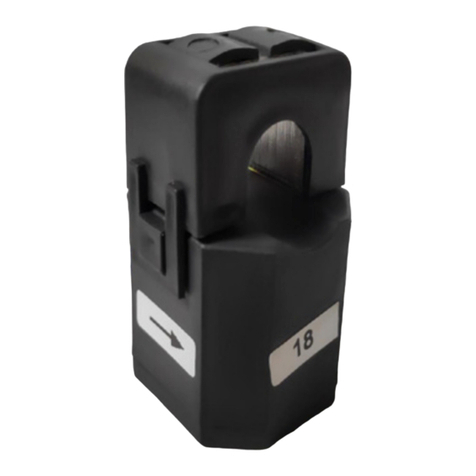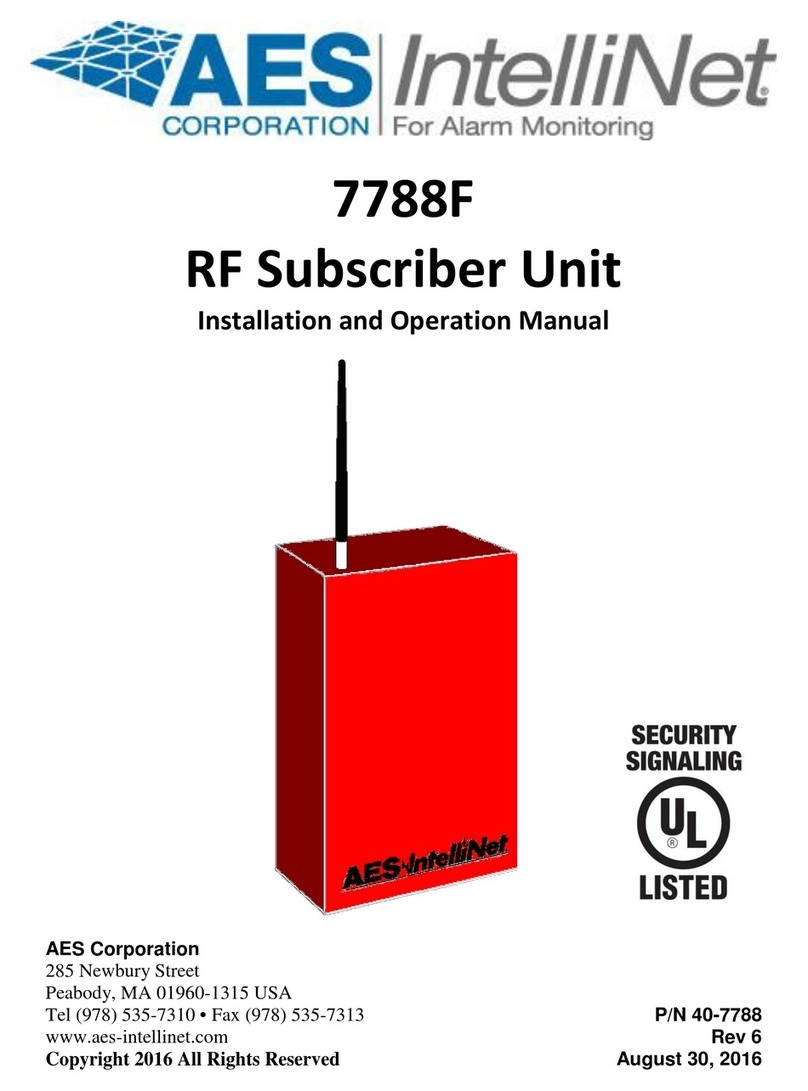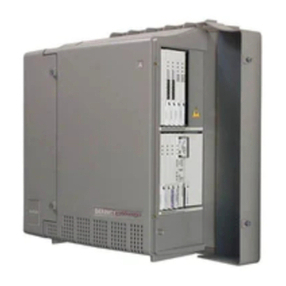Intab AirGate-Modbus User manual

AirGate-Modbus
INTAB INTERFACE-TEKNK AB 1/22
AirGate-Modbus
INSTRUCTIONS MANUAL
V1.1x C
INTRODUCTION .......................................................................................................................................................................................1
SPECIFICATIONS.......................................................................................................................................................................................2
CONNECTION AND INSTALLATION ..........................................................................................................................................................3
OPERATION..............................................................................................................................................................................................4
OPERATION MODES.................................................................................................................................................................................5
USING THE OPERATION MODES ..............................................................................................................................................................6
LONG REACH APPLICATION .....................................................................................................................................................................7
SETUP SOFTWARE....................................................................................................................................................................................8
CONFIGURATION MODES ........................................................................................................................................................................9
DETERMINATION AND SELECTION OF THE SERIAL PORT (COM) - WINDOWS.......................................................................................10
CONFIGURATIONS - AIRGATE-MODBUS ................................................................................................................................................12
DATA COMMUNICATION - SERIAL .........................................................................................................................................................13
DATA COMMUNICATION –WIRELESS ...................................................................................................................................................14
MODBUS COMMANDS ..........................................................................................................................................................................15
DESCRIPTION OF SOME REGISTERS .......................................................................................................................................................15
HOLDING REGISTERS TABLE...................................................................................................................................................................17
SUPPORTED MODBUS REGISTERS .........................................................................................................................................................17
ACCESSORIES .........................................................................................................................................................................................22
WARRANTY............................................................................................................................................................................................22
INTRODUCTION
AirGate-Modbus is an equipment with a link interface function between a network with Modbus RTU protocol about RS485 and a
wireless network with proprietary protocol about IEEE 802.15.4. Resulting from an advanced technological development, the
product stands out in many aspects, such as high performance, high connectivity and easy setup and operation. This technology is
presented as the ideal solution for applications which require flexibility and interoperability.
Its main characteristics are:
SMA connector for antenna;
2 dBi antenna;
Two connectors for one RS485 Modbus RTU interface;
USB Device (Mini-B);
Status indicator LEDs;
Button used to enter setup mode.

AirGate-Modbus
INTAB INTERFACE-TEKNK AB 2/22
SPECIFICATIONS
COMMUNICATION CHARACTERISTICS:
Maximum transmission power: 100 mW;
Range: 1000 meters line-of-sight in open field.
Data rate: RF 250 Kbps;
Baud rate serial: 1.200 to 115.2 Kbps;
Receptor's sensibility - 92 dBm;
Setup via Software Windows®.
NETWORK AND SECURITY:
ISM Operation Band: 2.4 GHz;
DSSS Technology - Direct Sequence Spread Spectrum;
OQPSK Modulation - Offset Quadrature Phase Shift Keying;
Point-to-point, star, or tree network typologies;
15 operation channels;
Network Identifier: (PAN ID);
Data encryption: AES-CBC-128 (Advanced Encryption Standard).
CONNECTIONS:
Power source connector;
USB Device (Mini-B);
RP SMA Female connector (Plug);
Two connectors for RS485 Modbus RTU interface.
POWER SOURCE:
Voltage: from 10 to 35 Vdc;
Maximum energy consumption: 70 mA (in 24 V).
ENVIRONMENTAL CONDITIONS:
Operation Temperature: 0 to 70 °C;
Relative humidity: 80 % up to 30 ºC.
ELECTROMAGNETIC COMPATIBILITY:
EN61000-4-2, EN61000-4-3, EN61000-4-4, EN61000-4-5, EN61000-4-6, CISPR11.
PHYSICAL CHARACTERISTICS:
Weight: 110 g.
PA66 housing for DIN rail mount;
Dimensions: 99.5 x 114 x 17.5 mm.
Protection Degree: IP20
Internal protection against inversion of the power supply voltage polarity.
Wire gauge: 0.1 to 3 mm² (28 to 12 AWG). Recommended torque: 0.4 Nm
CERTIFICATES:

AirGate-Modbus
INTAB INTERFACE-TEKNK AB 3/22
CONNECTION AND INSTALLATION
MECHANICAL INSTALLATION
AirGate-Modbus has its own enclosure, to be installed in a 35 mm trail.
For the installation in the trail, the metallic hook in the base must be located and pressed against the trail.
DIMENSIONS:
The dimensions of AirGate-Modbus are shown in Fig. 1.
Fig. 1 - Dimensions of AirGate-Modbus.
ELECTRICAL INSTALLATIONS
AirGate-Modbus has power supply connectors and serial communication interface RS485 according to Legend: Voltage supply Fig.
2.
Caution when connecting the power supply wires in AirGate-Modbus. If the positive
conductor of the power source is turned on, even if momentarily, to one of the
communication link terminals, the AirGate-Modbus may be damaged.
Fig. 2 - Power supply and communication connections of the AirGate-Modbus.
Fig. 3 shows the electrical connections needed. Terminals 1, 2 and 3 are destined for the communication with Modbus network.
These terminals are internally connected to terminals 4, 5 and 6. The terminals 7, 8 and 9 are used for AirGate-Modbus power
supply.
Fig. 2 –Electrical connections of AirGate-Modbus.

AirGate-Modbus
INTAB INTERFACE-TEKNK AB 4/22
INSTALLATION RECOMMENDATIONS
Input conductors must go through the system plant separated from the output and power supply conductors, in grounded
conduits.
OPERATION
In the frontal panel are found an mini-B USB connector, a SMA connector for the antenna, a setup button and two LEDs for status
indication. See Fig. 4.
Fig. 3 - AirGate-Modbus frontal panel
USB
The USB interface of AirGate-Modbus is used for setup. Depending on the operation mode set, this interface can be connected to a
PC functioning as master of the Modbus RTU network.
SETUP BUTTON
When press the button, AirGate-Modbus enters setup mode and waits the configuration by the USB interface. If there is no
communication through the USB interface, after 1 minute, this will go back to normal functioning.
LEDS
When turning the equipment on, the Status LED starts to flash quickly until the AirGate-Modbus
connects to a wireless network. In the moment that the AirGate-Modbus is connected to a wireless
network, the Status LED remains turned on.
When the setup button is pressed, the Status LED flashes slowly until AirGate-Modbus quits
operation mode. There are 3 possible ways to quit setup mode:
Clicking in the setup button again;
Applying a configuration successfully;
Waiting 1 minute.
The Communication LED flashes to show that the device is receiving packages through any of its
interfaces and is forwarding correctly. The speed of the flashing is according to the communication
speed.
When the Firmware of the AirGate-Modbus is being updated, the Communication LED will start to
flash and the LED Status will be off.

AirGate-Modbus
INTAB INTERFACE-TEKNK AB 5/22
OPERATION MODES
AirGate-Modbus can be configured with 4 different operation modes:
RS485-MASTER
Simple Forwarding between RS485 and IEEE 802.15.4
In this mode AirGate-Modbus uses the RS485 interface to communicate with a Modbus Network. And the wireless interface to
communicate with other AirGate-Modbus devices in RS485-SLAVES operation modes.
RS485-SLAVES
Simple forwarding between IEEE 802.15.4 and RS485
In this mode AirGate-Modbus has the objective of continuing the Modbus network. It uses the wireless interface to communicate
with another AirGate-Modbus, where the network master is located. The RS485 interface is used to communicate with Modbus
slaves.
As of firmware version V1.23, when operating in this mode of operation, the AirGate-Modbus can begin to automatically perform
the repeater function. This function does not require any special configuration. When configured in this mode of operation, after
the AirGate-Modbus finds a father (RS485-Master, USB-Master, Multi-Master, or even another RS485-Slaves) it then is able to offer
the option of having children, allowing other AirGates that are also operating with RS485-Slaves to automatically pair with it.
USB-MASTER
USB Routing for RS485 and IEEE 802.15.4
In this mode AirGate-Modbus uses the USB interface to communicate directly with a Modbus master and its RS485 interface to
communicate with a Modbus slave’s network. The wireless interface is used to communicate with other AirGate-Modbus devices in
RS485-SLAVES operation mode.
MULTI-MASTER
Multiplexing of the USB and RS485 for IEEE 802.15.4
In this mode AirGate-Modbus uses the RS485 and USB interfaces for the multiplexing of Modbus masters. The masters must be
directly linked to these interfaces. The wireless interface is used to communicate with other AirGate-Modbus devices in RS485-
SLAVES operation mode.
When this operation mode is used, a Timeout is needed to ensure that each of the masters have an usage time in the network. This
Timeout is automatically adjusted by DigiConfig software according to the baud rate used by the interfaces, as it can be seen in the
chapter “CONFIGURATIONS - AIRGATE-MODBUS” in the section “TIMEOUT”. Depending on the number of slaves and of the
response time of each slave, it may be necessary to adjust this Timeout to reduce possible communication errors.
It's important to emphasize that the Timeout configured for this operation mode refers to a time interval managed automatically
by the AirGate-Modbus. The network masters plugged in each one of the USB and RS485 interfaces must have their Timeouts
configured with double the time set in AirGate-Modbus Timeout.
COMPLEMENTARY MODES
Only devices with distinct functions form a wireless communication network. The operation form of some modes also imposes
connection restrictions. The modes compatible with the wireless connection may be seen in Table 1:
Mode
Connects with
RS485-MASTER
RS485-SLAVES
USB-MASTER
RS485-SLAVES
MULTI-MASTER
RS485-SLAVES
RS485-SLAVES *
RS485-SLAVES
Table 1 - Complementary modes
* The RS485-SLAVES operation mode only begins to offer the option of having children (behaving as a repeater) after having paired
with a father that is already operating on the network. This entire process is done automatically, without any intervention from the
operator.

AirGate-Modbus
INTAB INTERFACE-TEKNK AB 6/22
USING THE OPERATION MODES
WIRELESS SEGMENTS IN ANY POINT OF AN MODBUS NETWORK
Division of a wired network in wired segments interconnected by wireless segments. The division occurs far from the Modbus
master. It uses the RS485 port AirGate-Modbus to communicate with the master and the slaves. Additional wireless segments can
be inserted. Fig. 5 illustrates this possible application.
Fig. 4 - Wireless segments in any point of a Modbus network
WIRELESS SEGMENTS CLOSE TO THE MODBUS MASTER
Division of a wired network in wired segments interconnected by wireless segments. Wireless segments located close to the
Modbus master which communicates by USB port. It allows the AirGate-Modbus using as a USB-RS485 convertor for the first wired
segment. Fig. 6 illustrates this possible application.
Fig. 5 - Wireless segments close to the Modbus master
WIRELESS SEGMENTS CLOSE TO MULTIPLEXED MODBUS MASTERS
Multiplexing of 2 masters, one connected to the USB interface and another to the RS485. Wireless section located close to the
Modbus masters. It also allows the usage of a single master in any of the 2 interfaces (USB or RS485).
Fig. 7 - Wireless segments close to the multiplexed Modbus masters

AirGate-Modbus
INTAB INTERFACE-TEKNK AB 7/22
LONG REACH APPLICATION
In seeking to expand the network, in order to obtain a greater distance, it is possible to assemble a tree shaped topology. As
exemplified in Fig. 6, to expand the network, an AirGate-Modbus configured as a RS485-SLAVES (Firmware > 1.23) was inserted
with the same PAN ID (5670). In another segment, two AirGates were assembled using the RS485 interfaces, an AirGate-Modbus
operating the RS485-SLAVES mode, and an AirGate-Modbus operating in RS485-MASTER mode. In this segment a new PAN ID
(5671) was created, starting a new star network.
Fig. 6 - Topology in tree style

AirGate-Modbus
INTAB INTERFACE-TEKNK AB 8/22
RESTRICTION
In case there is the need to implement a tree-shaped network, a restriction must be observed. Due to issues imposed by Modbus
standard, Modbus slaves must not be connected between AirGate-Modbus as signed in Fig. 7.
Fig. 7 - Restriction
SETUP SOFTWARE
The DigiConfig application is a Windows® program used for the configuration of the AirGate-Modbus. For its installation, execute
the file “DigiConfigSetup.exe” from the CD. When installing the setup software, the USB Serial Port driver of AirGate-Modbus may
be automatically installed according to Fig. 10.
Fig. 8 - Selection of components
DigiConfig has a complete help file, with all necessary information for its full usage. To consult the help, start the application and
select the “Help” menu or press the “F1” key.
In case you don't have the CD which accompanies the AirGate-Modbus, consult the www.novusautomation.com website to get
DigiConfig installer and the additional manuals.
To configure a AirGate-Modbus you must execute the Digiconfig and in the main screen access “configurations/communication”
and edit the configurations, according to Fig. 11:

AirGate-Modbus
INTAB INTERFACE-TEKNK AB 9/22
Fig. 9 - Communication of DigiConfig
•Serial Port = USB Serial Port (COM X)
•Baud rate = 115200
•Parity = None
•Stop Bits = 2 bits
•Timeout (msec) = 1000
CONFIGURATION MODES
AirGate-Modbus is configurable through DigiConfig software via USB interface, being necessary to put the device in “setup mode”.
To enter this mode, simply press the SETUP BUTTON, checking that the STATUS LED now flashes slowly (approximately once per
second). In “setup mode” the device stops behaving as a gateway from a Modbus network and starts to accept the configurations.
In the main screen of the DigiConfig software (Fig. 12) the following configuration must be seen:
•Initial Address = 246

AirGate-Modbus
INTAB INTERFACE-TEKNK AB 10/22
Fig. 10 - DigiConfig main screen
To edit the configurations of the AirGate-Modbus, after clicking the Search button, you must select it in the tree to the left of the
main screen.
To quit “setup mode“, you must press the SETUP BUTTON again, “Cancel”, or “Apply” a configuration. In this moment, the device is
reset and starts to operate according to the last applied configuration.
DETERMINATION AND SELECTION OF THE SERIAL PORT (COM) - WINDOWS
DETERMINATION
The serial port associated to the AirGate-Modbus is automatically determined by the operational system a few instants after the
connection of the AirGate-Modbus. The user may easily identify or alter the COM port associated to the AirGate-Modbus accessing
the Windows® “Device Manager”:
Control Panel / System/ Hardware / Device Manager / COM & LPT Ports
It’s also possible to open the “Device Manager” executing the following command: “devmgmt.msc”.
After opening the “Device Manager” it's possible to verify which is the Serial Port (COM) associated to the AirGate-Modbus. As it
can be seen in Fig. 13 the AirGate-Modbus is associated to COM7.

AirGate-Modbus
INTAB INTERFACE-TEKNK AB 11/22
Fig. 13 - Determination of the COM Port
SELECTION
In case it's necessary to modify the Serial Port (COM) associated to the AirGate-Modbus select “USB Serial Port (COM X)” where the
AirGate-Modbus is connected. Access "Action/Properties" and in the "Port Definitions" tab click "Advanced...", according to Fig. 14.
In case this tab does not appear, the driver was not installed correctly and the DigiConfig software must be reinstalled. In the
“Advanced definitions for COMX” window change the parameter “COM port Number:” for the desired COM, as indicated in Fig. 15.
Some serial ports may be marked as In Use. Only select one of these ports in case you are sure that it is not being used by another
peripheral of your computer.
In some situations the serial ports may be marked as in use even when the associated device is not installed anymore in the
computer. In this case it is safe to associate this port to the AirGate-Modbus.
Fig. 14 - Accessing the advanced configuration of the COM port
IMPORTANT RECOMMENDATION
To improve the communication of the USB interface it is recommended the configuration of a Latency Timer. This parameter may
be modified accessing “Advanced definitions for COMX” window according to Fig. 14.
Later it's possible to verify, according to Fig. 15, the “Latency Timer (ms): which must be altered to 4.
Fig. 11 - Advanced definitions for COM

AirGate-Modbus
INTAB INTERFACE-TEKNK AB 12/22
CONFIGURATIONS - AIRGATE-MODBUS
BASICS
PAN ID
Choose a common identifier for each wireless network. All of the AirGate-Modbus devices from a same network must be
configured with the same PAN ID.
MODBUS ADDRESS
Each AirGate-Modbus must have a unique Modbus address. This address should be set before connecting the device to the
network. Modbus communication frames addressed to AirGate-Modbus will be handled by itself. Frames with any other address
will be forwarded.
This address is set in factory as 248, an invalid Modbus address, to avoid initial conflict with any other already configured Modbus
device in the network and should be changed to a unique address as soon as possible. While in Configuration Mode (status LED
flashing), communication parameters switch to 115200 bps, no parity, 2 stop bits and address 246.
BAUD RATE
Select for each interface the baud rate used by the Modbus network. All of the devices from the network must be configured with
the same baud rate.
PARITY
Select for each interface the parity/stop bits used by the Modbus network. All of the network devices must be configured with the
same parity/stop bits.
TIMEOUT
Timeout (in milliseconds) for the receipt of response bytes to the command sent to the slave station. Calculated automatically by
the software, according to the select baud rate.
For RS485-Master, RS485-Slaves and USB-Master operation modes, this parameter is only shown in the screen to help the setup of
the network master's Timeout, which must have its Timeout time configured with at least the Timeout shown in DigiConfig screen.
For Multi-Master operation mode, this parameter is used by the AirGate-Modbus, and may have its Timeout altered by the
DigiConfig according to what is explained in the section “MULTI-MASTER” of the “OPERATION MODES” chapter. Noting that in this
case the Timeout configured in each network master must be at least double the time configured for AirGate-Modbus.
OPERATION MODES
According to the desired functionality the AirGate-Modbus can be configured with different operation modes. These are
distinguished altering the functions of the communication interfaces, as explained in the “OPERATION MODES” chapter. When
selecting a operation mode in DigiConfig, a figure containing a topology example will help in its setup.
ADVANCED
INTERFRAME TIME
The maximum time allowed (in microseconds) between the receipt of two bytes from a same package. This time is calculated
automatically by DigiConfig software. It must only be modified it any of the network slaves show a high communication error rate.
The "Minimum time” and "Maximum Time" values are shown in DigiConfig and range according to the lowest baud rate selected
for the interfaces in the “Basic Configurations Guide”. When clicking the “Auto” button the text box will be available for altering of
the "Interframe Time” which must obligatorily be within the band.
RF POWER
Alters the value of the transmission of the AirGate-Modbus. Valid values from 0 to 20 dBm.
SECURITY
The encryption of the packages may be enabled by selecting the “Enable Security” box. In case you wish to modify the security key
simply click “Change Security Key” and type a new key in the fields “Typethekeyhere”.
FIRMWARE UPDATE
This DigiConfig tab is used for the firmware update of the AirGate-Modbus.
The following steps must be followed:
1. Locate the "Firmware" tab "Device Setup”.
2. Select "Enable Firmware Update”.
3. Click "Open” and search the new firmware file (".cbin").
4. Press the “Apply” button.
5. Wait the Firmware update process conclusion. The DigiConfig will show a text box with the information AirGate-Modbus
firmware recording performed successfully. Click "OK".
6. The DigiConfig will turn back to the initial screen and the STATUS LED of the AirGate-Modbus will start to flash rapidly.

AirGate-Modbus
INTAB INTERFACE-TEKNK AB 13/22
During the Firmware update process of the AirGate-Modbus, there must not have any
interruption. In case there is power outage, disconnection of the USB cable or interruption of the
Digiconfig software during the process, the AirGate-Modbus will probably cease operating
normally and must be forwarded to the technical support of the supplier.
DATA COMMUNICATION - SERIAL
The AirGate-Modbus possesses two communication interfaces:
•RS485, acting as communication interface with Modbus RTU protocol.
•USB device, acting with the communication interface of Modbus RTU protocol.
RS485 AND USB INTERFACE
The RS485 and USB interfaces may be configured to operate in the following speeds (baud rates): 1200, 2400, 4800, 9600, 19200,
38400, 57600 and 115200. Besides that, it may be configured to operate with one or two stop bits, and in the parities even, uneven
and none.
More details about the implementation of a Modbus devices network via RS485 can be found in the document “Basic RS485 and
RS422 Concepts”, available in the CD which accompanies the product or in the www.novusautomation.com website. The Table 2
helps the connection of the RS485 communication interface connectors.
D1
D
D+
B
Bidirectional data line
Terminals 1 and 4
D0
D
D-
A
Inverted bidirectional data line.
Terminals 2 and 5
C
Optional connection which improves the communication performance
Terminals 3 and 6
GND
Table 2 - RS485 connections

AirGate-Modbus
INTAB INTERFACE-TEKNK AB 14/22
DATA COMMUNICATION –WIRELESS
The AirGate-Modbus has a IEEE 802.15.4 Wireless communication interface to connect to the other Novus equipment that uses the
same communication interface. As of firmware version V1.23, the AirGate-Modbus allows, not only communication with other
AirGates, as described in the chapters Operation Modes and Using the Operation Modes, but also the option to communicate the
RHT-Air equipment units, which are Wireless transmitters of temperature, humidity, and dew point. Each AirGate-Modbus can
support the connection of 8 AirGate-Modbus equipment units and 35 RHT-Air equipment units. Each of these 8 AirGate-Modbus
equipment units allows the connection of over 8 AirGates and 35 RHT-Air up to the limit of 4 levels of depth, as illustrated in Fig.
16. This network topology is formed automatically at the moment the network begins. One only needs to configure at least one
AirGate-Modbus as a Multi-Master operation mode, USB-Master or RS485-Master and the other equipment: (i) AirGate-Modbus,
with the RS485-Slaves operation mode; and (ii) RHT-Air, all with the same PAN ID. After the configuration, the equipment units will
automatically be paired based on the best communication link (LQI) that is found.
For a correct functioning of the wireless communication network, it is important for all equipment to have the same firmware
version. If you have AirGate-Modbus equipment with a firmware version below V1.23 and wish to use the new functionalities
available in this version, such as a tree network topology that is totally wireless, or operation with RHT-Air equipment, you only
have to update the firmware of all the equipment or use a AirGate-Modbus with the new version of the firmware operating - such
as RS485-Master - in another PAN ID, connected to interface RS485 in one of the AirGates operating as RS485-Slaves of the first
PAN ID, as shown in the Long Reach Application.
Fig. 12 - Totally wireless Tree network topology with AirGate-Modbus and RHT-Air equipment

AirGate-Modbus
INTAB INTERFACE-TEKNK AB 15/22
MODBUS COMMANDS
As of the V1.23 Firmware version, the AirGate-Modbus begins to respond to Modbus commands that are forwarded to your
Modbus address, operating as a network slave. Commands forwarded to other slaves will be sent transparently. The Modbus RTU
commands (functions) are implemented and listed below, and they are interpreted by AirGate-Modbus. For more information
about each command and the Modbus protocol in general, access the site www.modbus.org.
READ HOLDING REGISTERS –0X03
This command can be used to read the value of one, or up to the maximum amount of consecutive holding registers, as shown in
the “Holding Registers Table.”
WRITE HOLDING REGISTERS –0X06
This command can be used to write in a holding register, as shown in “Holding Registers Table.”
DESCRIPTION OF SOME REGISTERS
REGISTER 35 –OPERATION CHANNEL
Shows the operation channel that the equipment is operating on the network. It can vary from 11 to 25, where each channel is
equivalent to an operation frequency. Among these 15 possible channels, the network operates on the channel that has the lowest
interference.
CHANNEL
OPERATION FREQUENCY
11
2405 MHz
12
2410 MHz
13
2415 MHz
14
2420 MHz
15
2425 MHz
16
2430 MHz
17
2435 MHz
18
2440 MHz
19
2445 MHz
20
2450 MHz
21
2455 MHz
22
2460 MHz
23
2465 MHz
24
2470 MHz
25
2475 MHz
Table 3 –Operation Channels
REGISTER 36 - LINK QUALITY INDICATOR RX FATHER
States the quality of the reception link of the connection between the equipment and the AirGate-Modbus father with which it is
paired. This value is obtained when measuring the power of the last packet received. This power is measured in dBm, which is a
logarithmic measurement of power in mW. The LQI can vary between -100dBm (worst reception quality) to -15 dBm (best
reception quality).
REGISTER 39 - LINK QUALITY INDICATOR RX CHILD
States the quality of the reception link of the connection between the AirGate-Modbus child whose Modbus address was filled-out
in the ADDR_FILHO register. This value is obtained when measuring the strength of the last packet received. This power is
measured in dBm, which is a logarithmic measurement of power in mW. The LQI can vary between -100dBm (worst reception
quality) to -15 dBm (best reception quality).

AirGate-Modbus
INTAB INTERFACE-TEKNK AB 16/22
LINK QUALITY INDICATOR
To evaluate if the equipment was installed in an appropriate manner, it is recommended to verify the quality of the connection
between each of the AirGate-Modbus and RHT-Air equipment units. This verification should be made by an analysis of registers 36
and 39, while the network is operating. To make this analysis, it is possible to use the Diagnostic tab of the DigiConfig that states
the network typology and the quality of the link between each of the wireless connections in an intuitive fashion.
For equipment operating in ideal conditions, where there are no obstacles and no type of electromagnetic interference, the LQI will
behave similarly to the contents of the graph shown in Fig. 17, where a comparison between different levels of power for the
Distance versus LQI ratio is made.
Fig. 13 –Ratio between Distance and LQI for several power levels
Table 4 lists the values obtained in the LQI reading with an evaluation of the signal quality. This same information can be seen in a
more intuitive fashion on the Diagnostic tab of the DigiConfig Software.
REGISTER VALUE
QUALITY
ICON
0
Device
connected via
USB
-15 to -60
Great
-60 to -70
Very Good
-70 to -80
Good
-80 to -90
Average
-90 to -100
Poor
Table 4 –Relation between LQI and Signal Quality
NOTE: The model described graphically considers only the means of propagation. The LQI may vary due to various factors, such as
peripheral obstacles such as trees, buildings, hills that interfere in the midst of the propagation, as explained by the Fresnel Zone
phenomenon.

AirGate-Modbus
INTAB INTERFACE-TEKNK AB 17/22
HOLDING REGISTERS TABLE
SUPPORTED MODBUS REGISTERS
ADDRESS
DESCRIPTION
MINIMUM
MAXIMU
M
R/W
0
Used by the configuration software to place the equipment in firmware
update mode. The equipment only accepts writing in this register if it is
in configuration mode. If 1 is written on the register outside the
configuration Software, the only was to return to the operation mode is
turning off and turning back on the device.
0 –Standard mode
1 –Enters in Bootloader
mode
R/W
1
Used by the configuration software to place all the registers, minus the
protected ones, in compliance with the factory standards. After written
in this register it saves the configurations on the flash. Only available in
configuration mode.
0 –Standard mode
1 –Places all the registers
inn default mode
R/W
2
Used by the configuration software to restart the device. If it is in
configuration mode, it returns to operation mode. If not, then it restarts.
Some configurations will only be applied after the device restarts.
0 –Standard mode
1 –Resets the device
R/W
3
Used by the configuration software to save all the configurations on the
device’s flash memory. If this register is not activated, the configurations
made are saved on the FLASH, and when the device restarts, it returns to
the previous configurations.
0 –Standard mode
1 –Saves the
configurations on the
FLASH
R/W
4
Shows if the device is a coordinator of the IEEE 802.15.4 network.
Remember that there can only be one coordinator per PAN ID.
1 –It is the Coordinator
0 –It is a Router
R
5
Used to configure the product in one of the 4 operation modes. The
operation modes operate as described in the chapter Operation Modes.
0- RS485-Master
1- RS485-Slaves
2- USB-Master
3- Multi-Master
R/W
6
Configured the least significant PAN ID byte
0
255
R/W
7
Configured the most significant PAN ID byte
0
255
R/W
8
Enables and disables the device when verifying the CRC of the package
every time it receives packages in the RS485 or USB interface. If enabled
can the CRC is not correct, the packet is not forwarded to the rest of the
network.
0 - Disabled
1 - Enabled
R/W
9
Enables on inhibits the use of cryptography in wireless communication
When enabled, all the devices of a single PAN ID should have their
cryptography enabled and use the same SECURITY_KEY.
0 - Disabled
1 - Enabled
R/W
10
1st Byte of the SECURITY_KEY. When the cryptography is enabled, all of the
devices of a single PAN ID should have the same value in this register.
0
1
R/W
11
2nd Byte of the SECURITY_KEY. When the cryptography is enabled, all of
the devices of a single PAN ID should have the same value in this register.
0
255
R/W
12
3rd Byte of the SECURITY_KEY. When the cryptography is enabled, all of the
devices of a single PAN ID should have the same value in this register.
0
255
R/W
13
4th Byte of the SECURITY_KEY. When the cryptography is enabled, all of the
devices of a single PAN ID should have the same value in this register.
0
255
R/W
14
5th Byte of the SECURITY KEY. When the cryptography is enabled, all of the
devices of a single PAN ID should have the same value in this register.
0
255
R/W
15
6th Byte of the SECURITY_KEY. When the cryptography is enabled, all of the
devices of a single PAN ID should have the same value in this register.
0
255
R/W
16
7th Byte of the SECURITY_KEY. When the cryptography is enabled, all of the
devices of a single PAN ID should have the same value in this register.
0
255
R/W
17
8th Byte of the SECURITY_KEY. When the cryptography is enabled, all of the
devices of a single PAN ID should have the same value in this register.
0
255
R/W
18
9th Byte of the SECURITY_KEY. When the cryptography is enabled, all of the
devices of a single PAN ID should have the same value in this register.
0
255
R/W
19
10th Byte of the SECURITY_KEY. When the cryptography is enabled, all of
the devices of a single PAN ID should have the same value in this register.
0
255
R/W
20
11th Byte of the SECURITY_KEY. When the cryptography is enabled, all of
the devices of a single PAN ID should have the same value in this register.
0
255
R/W

AirGate-Modbus
INTAB INTERFACE-TEKNK AB 18/22
21
12th Byte of the SECURITY KEY. When the cryptography is enabled, all of
the devices of a single PAN ID should have the same value in this register.
0
255
R/W
22
13th Byte of the SECURITY KEY. When the cryptography is enabled, all of
the devices of a single PAN ID should have the same value in this register.
0
255
R/W
23
14th Byte of the SECURITY_KEY. When the cryptography is enabled, all of
the devices of a single PAN ID should have the same value in this register.
0
255
R/W
24
15th Byte of the SECURITY_KEY. When the cryptography is enabled, all of
the devices of a single PAN ID should have the same value in this register.
0
255
R/W
25
16th Byte of the SECURITY_KEY. When the cryptography is enabled, all of
the devices of a single PAN ID should have the same value in this register.
0
255
R/W
26
Configures which Baud Rate will be used in the operation mode in the
USB interface of the device. In configuration mode, as described in
chapter Configuration Software, the device always Uses Baud Rate
115200.
0 –Baud Rate 1200
1 –Baud Rate 2400
2 –Baud Rate 4800
3 –Baud Rate 9600
4 –Baud Rate 19200
5 –Baud Rate 38400
6 –Baud Rate 57600
7 –Baud Rate 115200
R/W
27
Configures which Baud Rate will be used in the operation mode in the
RS485 interface of the device.
0 –Baud Rate 1200
1 –Baud Rate 2400
2 –Baud Rate 4800
3 –Baud Rate 9600
4 –Baud Rate 19200
5 –Baud Rate 38400
6 –Baud Rate 57600
7 –Baud Rate 115200
R/W
28
Configures the parity and how many stops bits will be used in the
operation mode in the USB interface of the device. In configuration
mode, as described in chapter Configuration Software, the device
always uses ParityNone_StopBits2.
0 - Parity None Stop Bits 1
1 - Parity None Stop Bits 2
2 - Parity Even Stop Bits 1
3 - Parity Odd Stop Bits 1
R/W
29
Configures the parity and how many stops bits will be used in the
operation mode in the RS485 interface of the device. To facilitate
connectivity with devices from different manufacturers, when
configured with ParityNone_StopBits1 or ParityNone_StopBits2, the
device always transmits using 2 stop bits and receives with 1 stop bit.
This allows for communication with devices with both configurations,
but this feature is only available with the RS485 interface.
0 - Parity None Stop Bits 1
1 - Parity None Stop Bits 2
2 - Parity Even Stop Bits 1
3 - Parity Odd Stop Bits 1
R/W
30
Interframe is the time used to characterize the fact that 2 bytes are part
of the same Modbus frame (packet). When two bytes are spaced in less
time than the time configured in this register, they are part of the same
packet. When this time is exceeded, the frame is considered to be
finished.
In this register the Interframe Modbus for USB is configured. When
configured with 1749, it automatically takes on the values according to the
Baud Rate in compliance with the Modbus protocol. If the network master
connected to the USB interface has a high rate of errors, it is possible that
it is not following the Modbus rule. In this case, increasing the value of the
register may solve the problem.
1749
40000
R/W
31
Interframe is the time used to characterize the fact that 2 bytes are part
of the same Modbus frame (packet). When two bytes are spaced in less
time than the time configured in this register, they are part of the same
packet. When this time is exceeded, the frame is considered to be
finished.
In this register the Interframe Modbus for USB is configured. When
configured with 1749, it automatically takes on the values according to the
Baud Rate in compliance with the Modbus protocol. If a master or slave
connected to the RS485 interface has a high rate of errors, it is possible
that it is not following the Modbus rule. In this case, increasing the value of
the register may solve the problem.
1749
40000
R/W
32
As explained in the chapter Configurations –AirGate-Modbus, this
register is used to configure the Modbus address, i.e., the address that
1
254
R/W

AirGate-Modbus
INTAB INTERFACE-TEKNK AB 19/22
identifies the device on the network. As a standard, since it is a gateway
and to not conflict with other network devices, all of the AirGate-Modbus
leave the factory with the address 248.
When in configuration mode, as explained in the Configuration Mode
chapter, the device always answers for the Modbus 246 address using
the USB interface.
33
When operating in Multi-Master mode, as explained in the MULT-
MASTER chapter, the gateway uses the Multiplexar function that needs
a time-out to release the interface in case the response does not return
to one of the masters.
The Time-out is configured in this register. This is the maximum amount
of wait time for a response from a slave
300
65535
R/W
34
Used to configure the transmission power of the Wireless interface. The
larger the configured value, the greater the reach.
0 –0 dBm,
1 –2 dBm
2 –4 dBm
3 –6 dBm
4 –8 dBm
5 –10 dBm
6 –12 dBm
7 –14 dBm
8 –20 dBm
R/W
35
Indicates the operation channel which can vary from 11 to 25, According
to Anatel guidelines, the device can operate in the frequencies of
channels 11 to 25 for power levels of up to 20 dBm.
11
25
R
36
LQI RX Father Register
Lists the LQI RX Father, i.e., the quality of the reception link to the
network father. The LQI Rx is a power measurement of the last packet
received by the father. This amount is measured in dBm and varies
between -100dBm (worst reception quality) to -15 dBm (best reception
quality). This register has a value of 0 when the device is in configuration
mode or is the network coordinator (that does not have a father).
-100
-15
R
37
Indicates the number of children (AirGates in operation mode RS485-
Slaves + RHTs-Air) that the device has.
0
43
R
38
ADDR_FILHO register.
This register is used to request the AirGate-Modbus information about
its children.
This register should include the Modbus address of the child that
requires the information contained in the registers 39 to 48.
The information will only be filled out is the Modbus address
corresponds to a device that is in a branch below the one the father
belongs to.
If the Modbus address does not belong to a direct child, the information
will correspond to the child en route to the destination.
0
255
R/W
39
LQI RX Child Register.
States the LQI RX Child, i.e., the LQI of the last packet received by the
AirGAte of the child en route to ADDR_FILHO. If ADDR_FILHO is of a
child, the LQI corresponds to it, otherwise, the LQI corresponds to the
child of Short Mac ROTA_FILHO_SHORT_MAC_0
ROTA_FILHO_SHORT_MAC_1.
-100
-15
R
40
States the number of packets requested to the child with the address
ADDR_FILHO as long as AirGate has started until reaching the limit of the
register.
0
65535
R
41
States the number of packets answered by the child with the address
ADDR_FILHO as long as AirGate has started until reaching the limit of the
register.
0
65535
R
42
Lists the error rate in % * 100.
To obtain the error rate in %, divide the register value by 100.
0
10000
R
43
States the size of the last requested packet to the child with the address
ADDR_FILHO.
0
4096
R
44
States the size of the last requested answered by the child with the
address ADDR_FILHO.
0
4096
R

AirGate-Modbus
INTAB INTERFACE-TEKNK AB 20/22
45
States the throughput of the last transaction that occurred with the slave
of address ADDR_FILHO considering the time from the first byte received
by the master’s request interface until the last byte transmitted from the
child’s response to the master's interface and the size of the request and
response packets.
Information available in Bytes/Second.
0
65530
R
46
States the response time of the last transaction that occurred with the
slave of address ADDR_FILHO considering the last byte received by the
master’s requisition interface until the first byte transmitted from the
slave’s response packet to the master’s interface.
Information available in milliseconds.
0
65535
R
47
Register ROTA_FILHO_SHORT_MAC_0.
First Byte of the Short Mac of the AirGate-Modbus route to the child
with Modbus address ADDR_FILHO.
0
255
R
48
Register ROTA_FILHO_SHORT_MAC_1.
First Byte of the Short Mac of the AirGate-Modbus route to the child
with Modbus address ADDR_FILHO.
0
255
R
49
Noise in channel 11 (frequency: 2405 MHz, band: 2 MHz) obtained when
starting the network. The noise is measured with the power of the noise
level of the channel measures in dBm, and can vary from -100 dBm
(clean channel) to -15 dBm (dirty channel).
-100
-15
R
50
Noise in channel 12 (frequency: 2410 MHz, band: 2 MHz) obtained when
starting the network. The noise is measured with the power of the noise
level of the channel measures in dBm, and can vary from -100 dBm
(clean channel) to -15 dBm (dirty channel).
-100
-15
R
51
Noise in channel 13 (frequency: 2415 MHz, band: 2 MHz) obtained when
starting the network. The noise is measured with the power of the noise
level of the channel measures in dBm, and can vary from -100 dBm
(clean channel) to -15 dBm (dirty channel).
-100
-15
R
52
Noise in channel 14 (frequency: 2420 MHz, band: 2 MHz) obtained when
starting the network. The noise is measured with the power of the noise
level of the channel measures in dBm, and can vary from -100 dBm
(clean channel) to -15 dBm (dirty channel).
-100
-15
R
53
Noise in channel 15 (frequency: 2425 MHz, band: 2 MHz) obtained when
starting the network. The noise is measured with the power of the noise
level of the channel measures in dBm, and can vary from -100 dBm
(clean channel) to -15 dBm (dirty channel).
-100
-15
R
54
Noise in channel 16 (frequency: 2430 MHz, band: 2 MHz) obtained when
starting the network. The noise is measured with the power of the noise
level of the channel measures in dBm, and can vary from -100 dBm
(clean channel) to -15 dBm (dirty channel).
-100
-15
R
55
Noise in channel 17 (frequency: 2435 MHz, band: 2 MHz) obtained when
starting the network. The noise is measured with the power of the noise
level of the channel measures in dBm, and can vary from -100 dBm
(clean channel) to -15 dBm (dirty channel).
-100
-15
R
56
Noise in channel 18 (frequency: 2440 MHz, band: 2 MHz) obtained when
starting the network. The noise is measured with the power of the noise
level of the channel measures in dBm, and can vary from -100 dBm
(clean channel) to -15 dBm (dirty channel).
-100
-15
R
57
Noise in channel 19 (frequency: 2445 MHz, band: 2 MHz) obtained when
starting the network. The noise is measured with the power of the noise
level of the channel measures in dBm, and can vary from -100 dBm
(clean channel) to -15 dBm (dirty channel).
-100
-15
R
58
Noise in channel 20 (frequency: 2450 MHz, band: 2 MHz) obtained when
starting the network. The noise is measured with the power of the noise
level of the channel measures in dBm, and can vary from -100 dBm
(clean channel) to -15 dBm (dirty channel).
-100
-15
R
59
Noise in channel 21 (frequency: 2455 MHz, band: 2 MHz) obtained when
starting the network. The noise is measured with the power of the noise
level of the channel measures in dBm, and can vary from -100 dBm
(clean channel) to -15 dBm (dirty channel).
-100
-15
R
60
Noise in channel 22 (frequency: 2460 MHz, band: 2 MHz) obtained when
-100
-15
R
Table of contents
Popular Gateway manuals by other brands
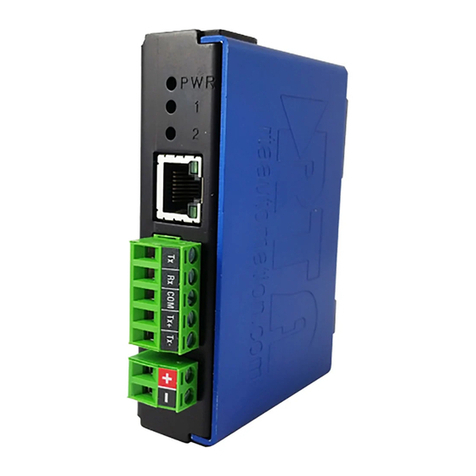
RTA
RTA 460MSBS-NNA1 Product user guide
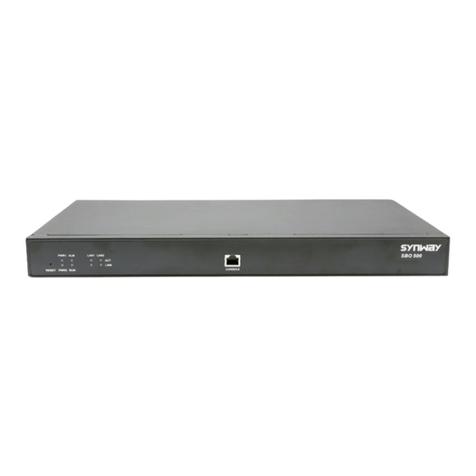
Synway
Synway SBO500 SBO Series user manual

Winmate
Winmate EAC Mini EACIL20 quick start guide
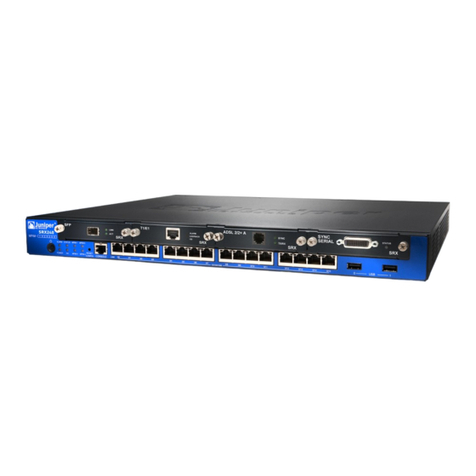
Juniper
Juniper SRX240 Series Getting started guide

Fält Communications AB
Fält Communications AB 252236 user manual
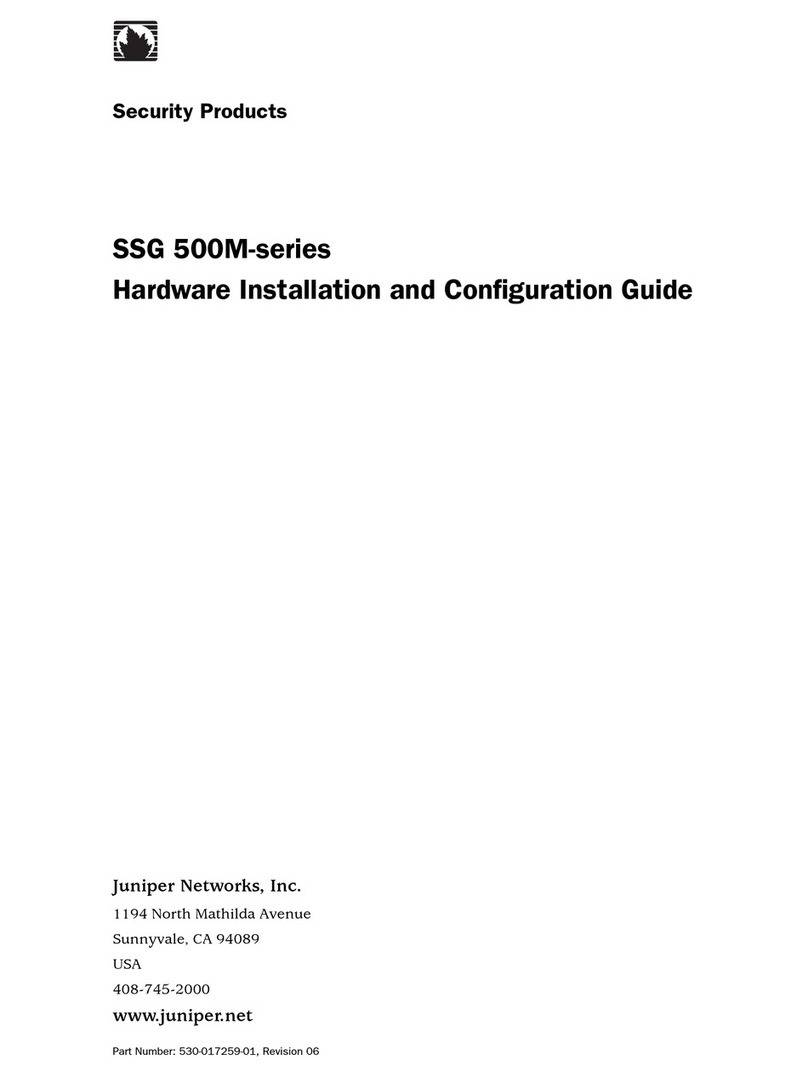
Juniper
Juniper SSG 500M Series Hardware installation and configuration guide
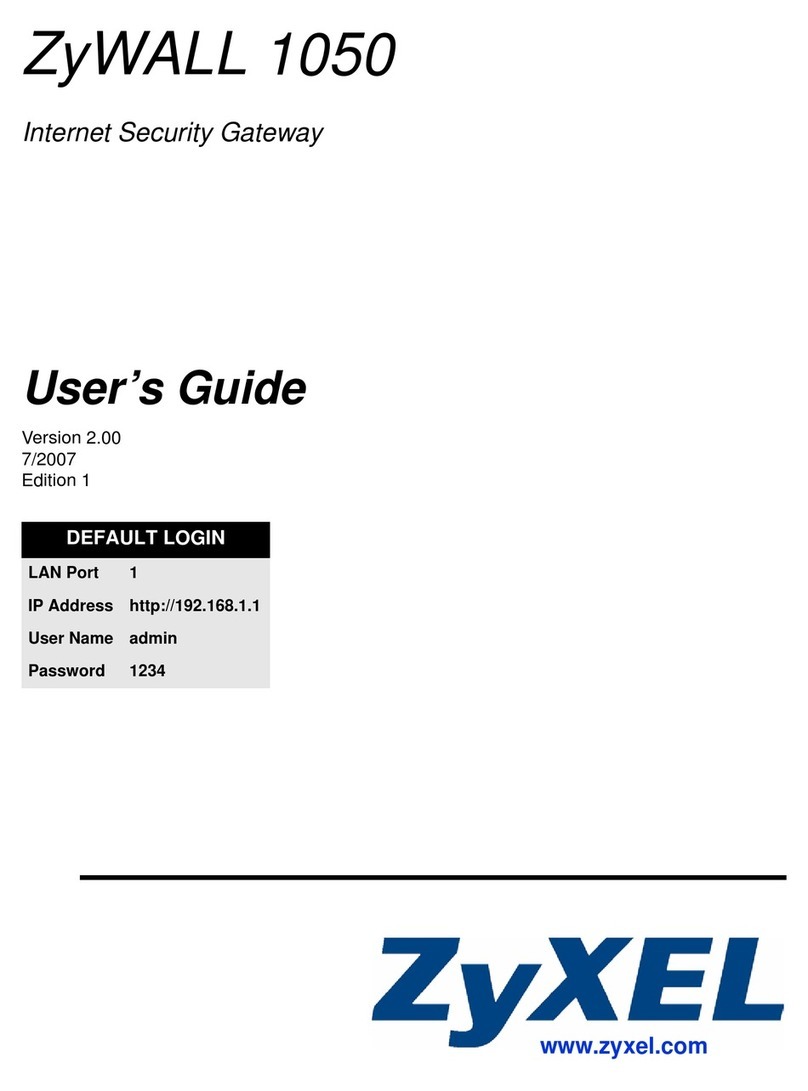
ZyXEL Communications
ZyXEL Communications ZYWALL 1050 - V2.00 EDITION 1 user guide
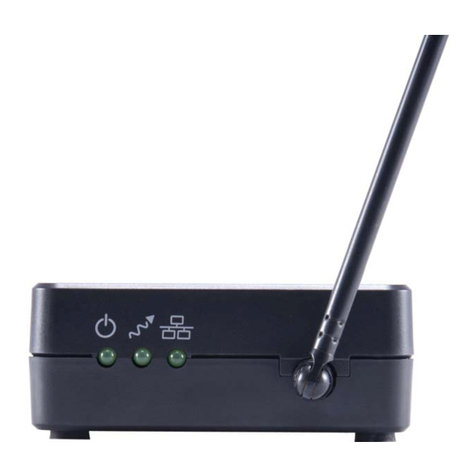
Harman
Harman AMX NetLinx Clear Connect NXB-CCG quick start guide
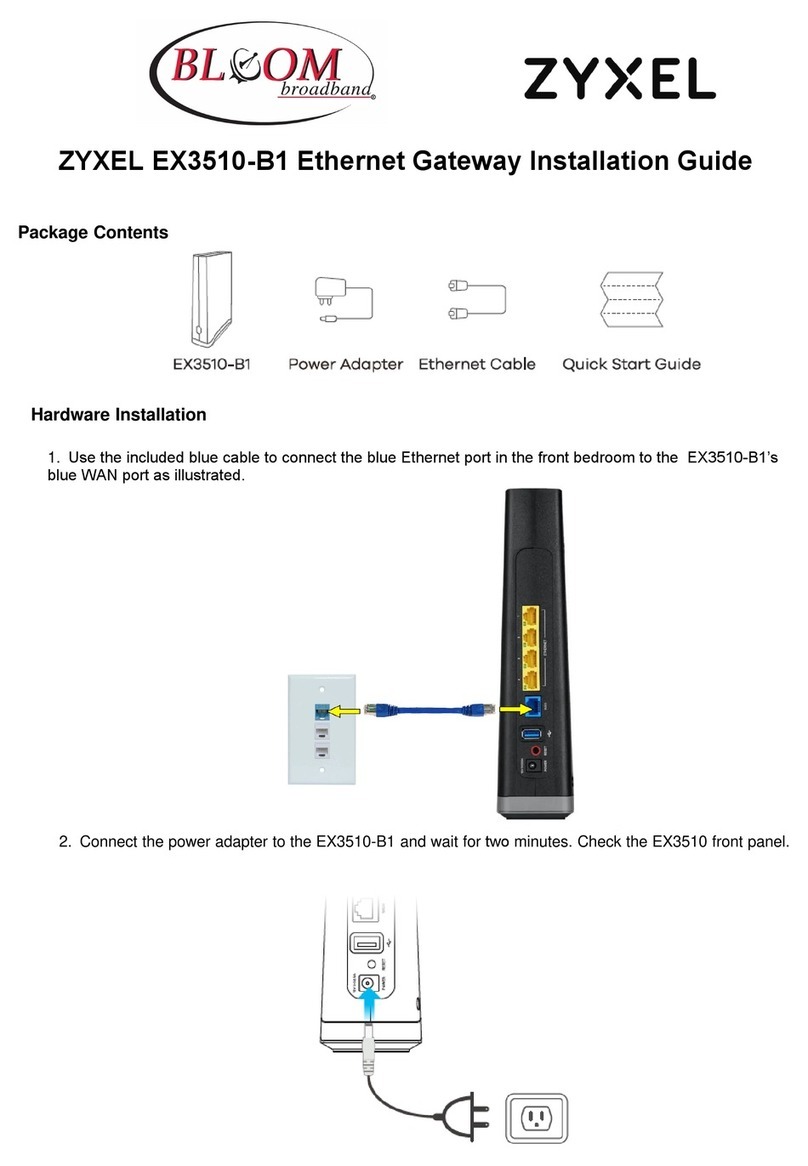
ZyXEL Communications
ZyXEL Communications EX3510-B1 installation guide
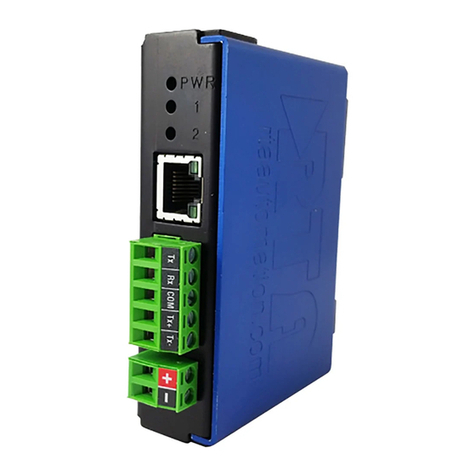
RTA
RTA 460ECMM-NNA4 Product user guide
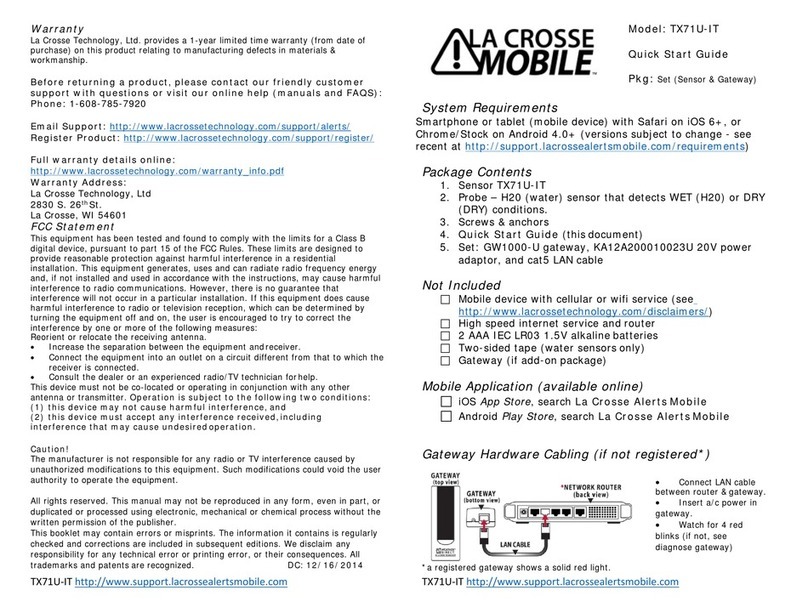
La Crosse Technology
La Crosse Technology MOBILE TX71U-IT quick start guide
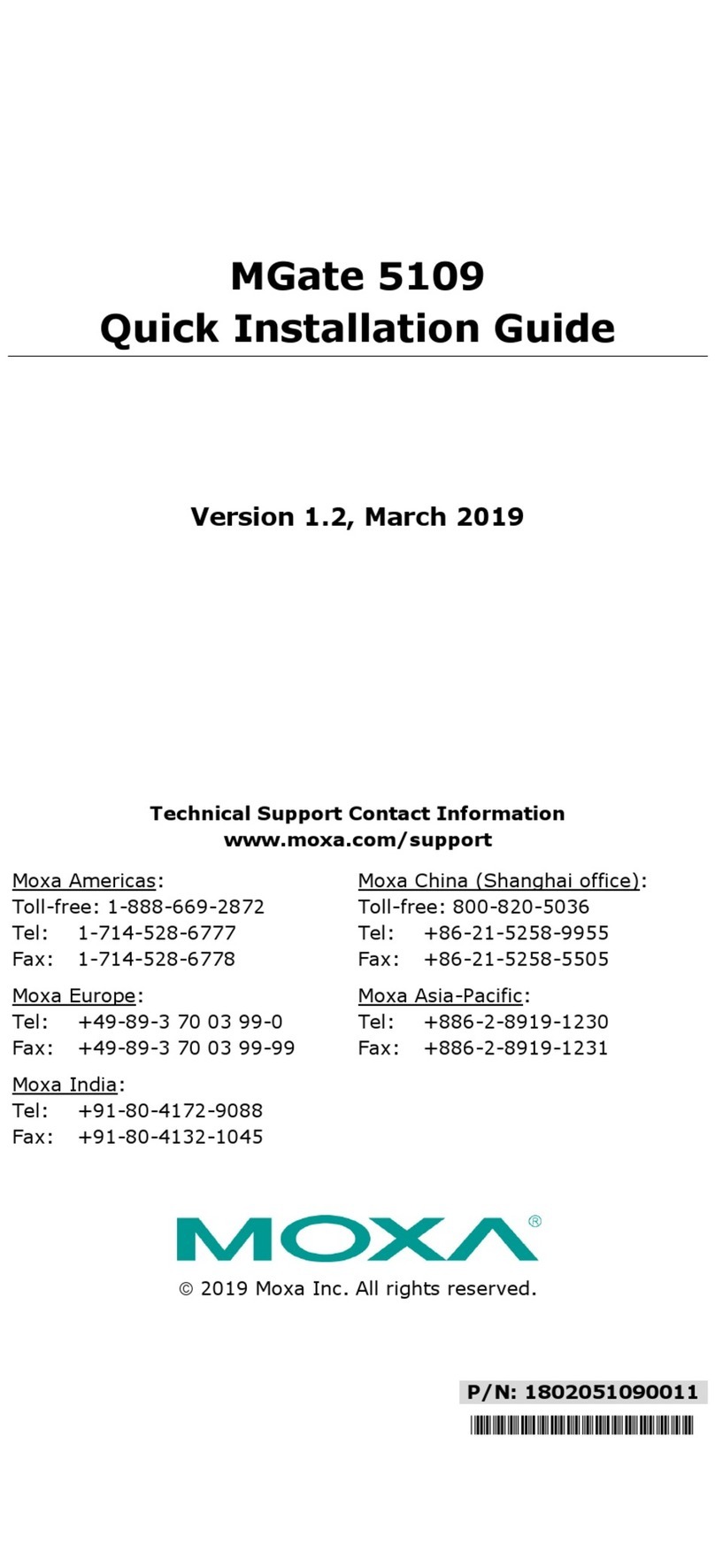
Moxa Technologies
Moxa Technologies MGate 5109 Quick installation guide
